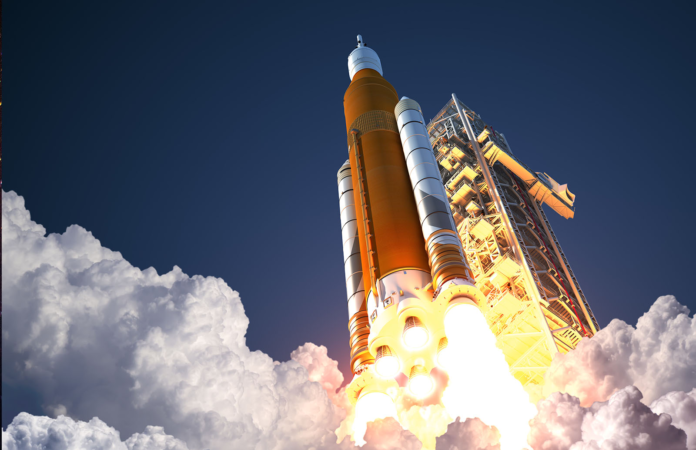A groundbreaking nuclear rocket engine that could completely change how we conduct long distance space missions is now under construction. The Pulsar Fusion rocket could more than halve the time it would take to fly to Mars, if current reports are to be believed, which would allow astronauts more time to actually study the Martian surface before having to fly back.
The idea of using nuclear fusion to power things has been an ongoing hypothetical for decades at this point. Unlike nuclear fission, which we see in nuclear reactors today, fusion looks to fuse two atoms together instead of splitting them. This liberates an insane amount of energy, and some scientists believe it could create limitless, zero-carbon energy to replace fossil fuels.
A fictional spacecraft approaches the Moon. Image source: NASA’s Goddard Space Flight Center/Chris Smith (KBRwyle)
While we have yet to complete a nuclear fusion reactor on Earth itself, the effects offered by this process could reach space much sooner. The new rocket engine is being developed by Pulsar Fusion, an aerospace firm based out of Bletchley. So far, the company expects the fusion rocket engine to be able to exceed speeds of 805,000 kmph and withstand the hottest temperatures in the solar system.
The idea behind nuclear fusion, as I’ve noted before in previous coverage, is to harness a power similar to that of the Sun. The reason that it might work better in space with a propulsion system is because it won’t need a massive steam turbine to help fuel it, and it won’t need to create the fuel on-site. It can be externally sourced.
Richard Dinan, CEO and found of Pulsar Fusion, believes that they can harness nuclear fusion power directly into the engine within just four years, which could make this technology useful in upcoming missions, like NASA’s planned mission to Mars in the 2030s. Of course, we’ll have to see how viable that timetable actually looks down the line. For now, it is an ambitious and intriguing idea.




